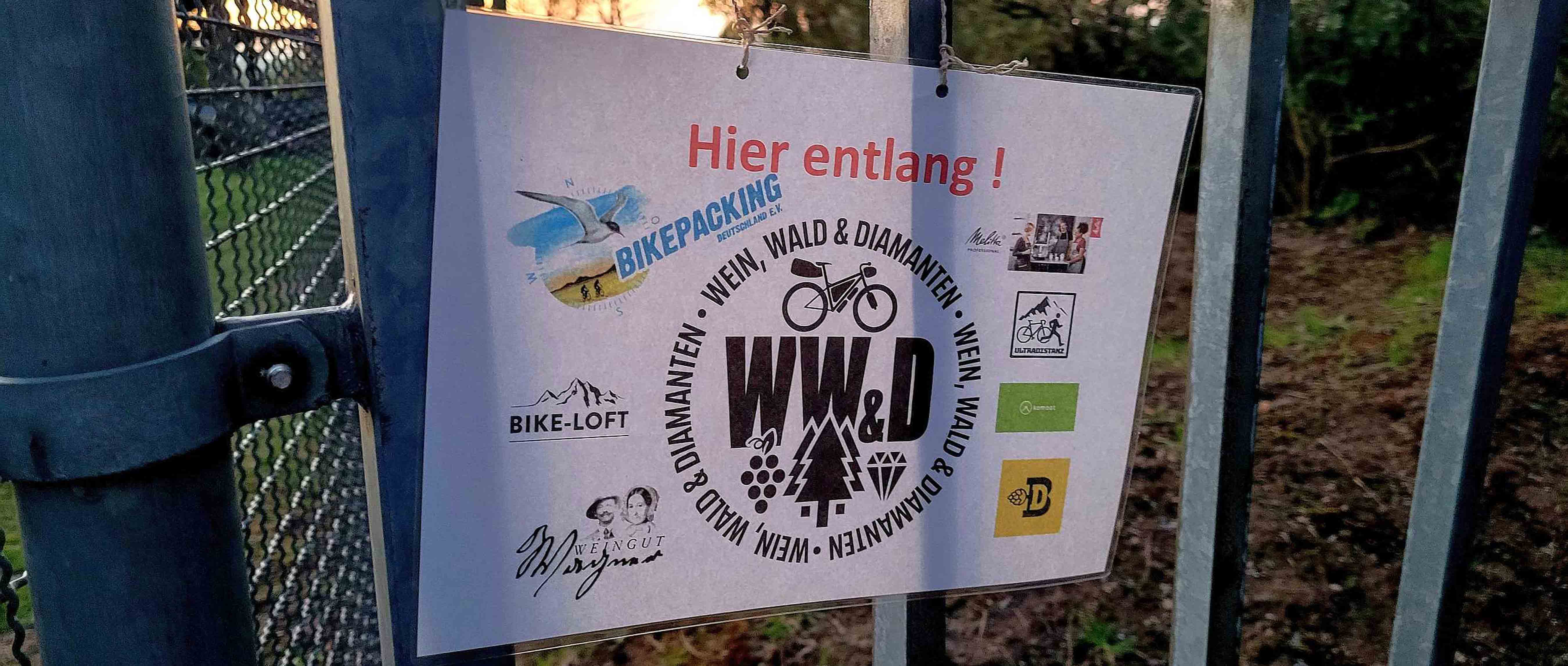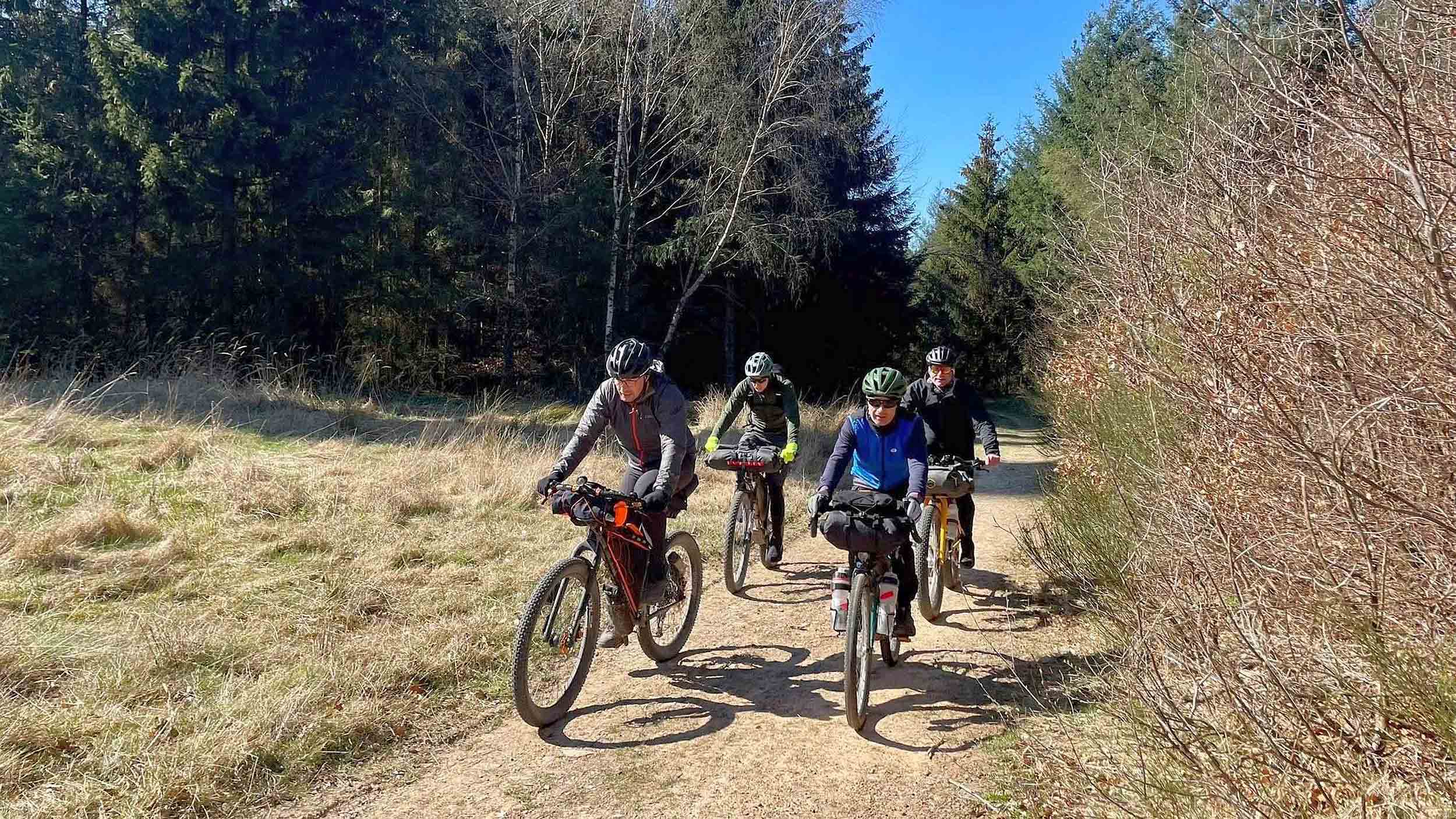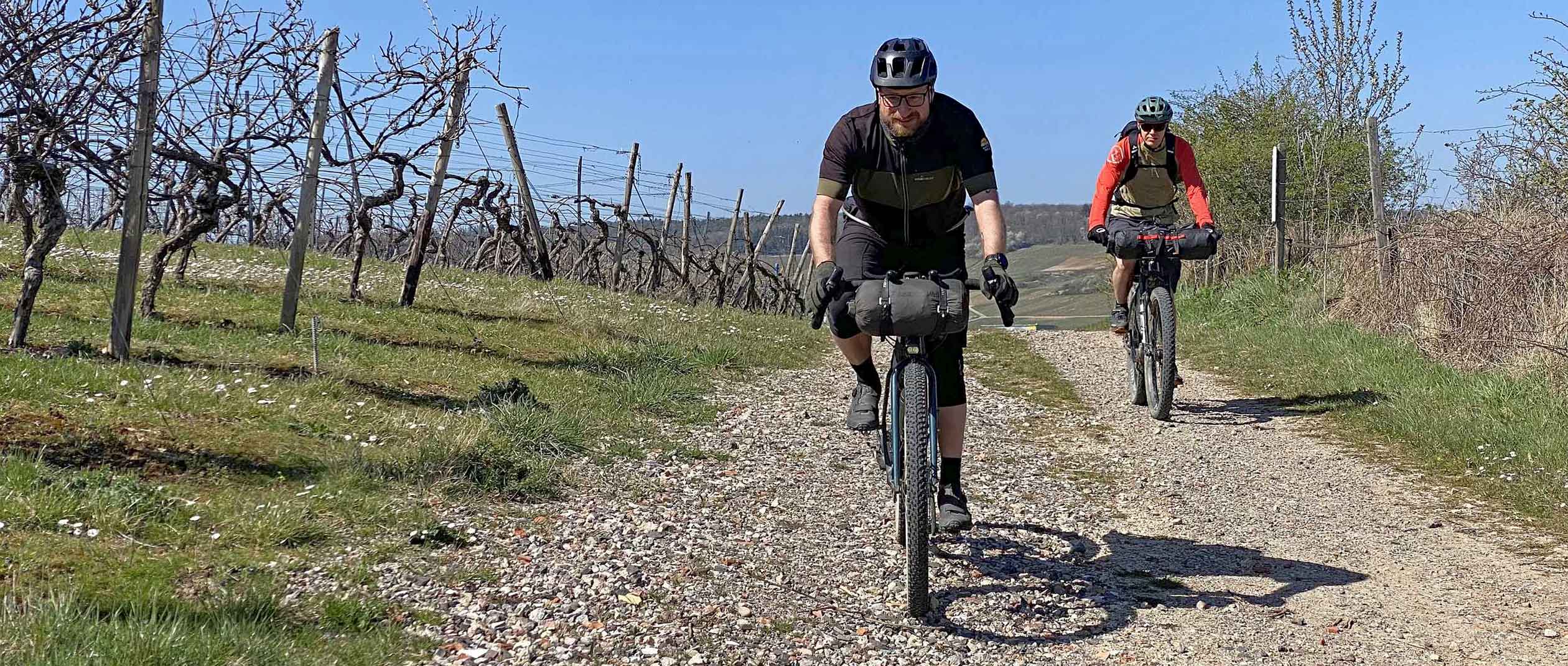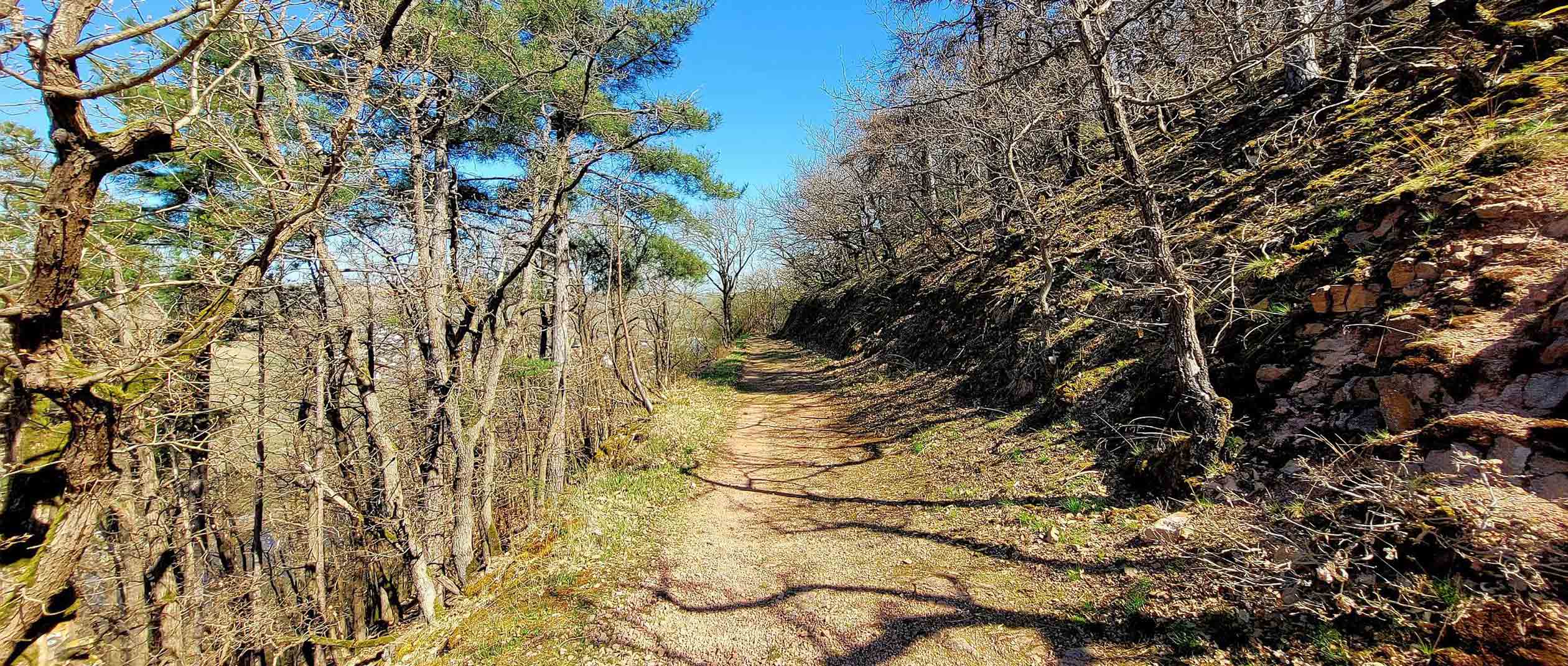The WW&D bikepacking tour is a 300km route through the Rheinhessen region of Germany and participants generally ride the route over the course of two or even three days. The technical and challenging parcours means riders generally opt for mountain bike hardtails fitted with big volume XC tyres. Timo Rokitta decided to do the event differently though and rode it non-stop on his trusty gravel bike. Did he make it to the end in one piece? Read on to find out.

"Our event is not a race, but an adventure," organiser Sven once again emphasises clearly at the start of WW&D. The gravel ride, or more accurately, the 300 km bikepacking tour Wine, Forest & Diamonds as it's officially called, attracts up to 30 riders to Essenheim, near the German state capital Mainz in the region of Rheinhessen.
Most of the participants are heavily loaded, with wide knobby tires and suspension forks on their bikes. With my weight-optimised gravel bike featuring 45mm tyres and minimal gear, I feel a bit "underdressed." However, my plan is to complete the route non-stop, where as most participants have scheduled one or even two overnight stays.

Shortly after sunrise at 7 a.m., Sven gives the signal to start and the group of riders slowly gets moving. During the first few kilometers, it's still cold at 8 degrees Celsius. The route starts with constant ups and downs on gravel paths through the vineyards. The first real challenge is a steep, 1.5km long section of rough cobblestones, ending at the Jakobsberg Monastery.
The climb offers fantastic views of the vineyards in the rising sun. It becomes more technical and rocky before descending toward the Nahe River. The view from the lookout point of the valley and the surrounding landscape is phenomenal and makes up for the early struggles.
Once down in the valley, there’s time to catch a breath and enjoy the peaceful surroundings before the next climb up to Ebernburg Castle. After passing a golf course, the most challenging part of the entire track begins. The descent from the Lemberg is exposed in parts, with many sharp rocks sticking out of the ground. The tight switchbacks are a real challenge on a gravel bike.
The route continues roughly along the Nahe River over coarse gravel. Riding on an old railway embankment, we reach the Kinnsfels Tunnel. This nearly 300-meter-long, pitch-black, former railway tunnel is littered with large rocks, making it impossible to ride through on a gravel bike. So it's time to turn on the lights and push the bike. After the tunnel, a narrow, overgrown and still rough gravel path awaits. Riding is again impossible and I end up pushing the bike for about two kilometers.

By the time I reach Kirn, about half the distance is behind me and a gas station right along the route is perfectly timed to refill supplies. A little later, I find myself in the Hunsrück, the area where the infamous robber Schinderhannes roamed over 200 years ago. The route rolls through small villages and farms, with climbs that are manageable and fun to ride. One especially noteworthy place is the small village of Woppenroth, which gained some fame in Germany when the TV series "Heimat – A German Chronicle" was filmed there in 1981/1982. For the show, the village was renamed "Schabbach" and the local residents even appeared as extras.
The longest of the 23 climbs on the tour comes shortly after. It stretches over 10 kilometers, with the first two kilometers being quite steep. By the time I reach the top, my water supplies are completely gone. Before entering the long and remote stretch through the Soonwald forest, I want to refill. But the village of Schwarzerden is even more deserted than the ones before.
I spot a young man working on his car and ask if there’s a well or a shop nearby. He tells me there’s nothing up here and the village only has about 200 residents. Just then, his father comes out of the garage and hands me a bottle of water - an absolute lifesaver in that moment. He tells me the village of Schwarzerden has been around for a very long time and that there will be a big festival in the summer to celebrate its 700th anniversary—apparently, things really come alive here then. I thank him kindly and continue across the vast high plateau through the Soonwald. Over the next 30 kilometers, I don’t encounter a single soul.

Only near the A61 motorway do I find another gas station, where I buy some cola and chocolate bars. By this time, it’s getting dark and at the Jägerhaus lodge, I decide to take a less technical descent down to Bingen am Rhein. At the bottom, it’s pitch-black and a bike path leads me to Ingelheim am Rhein. After one final climb, I’ve made it.
WW&D is a gravel adventure like no other. Tricky trails, breathtaking and remote landscapes - these are the highlights of this event. Really, one should take several days to complete the track and soak in the scenery - just like most of the participants do.
You can find out more information about the event at their website.
If you would like to follow in Timo’s tyre prints, you can find his route here: